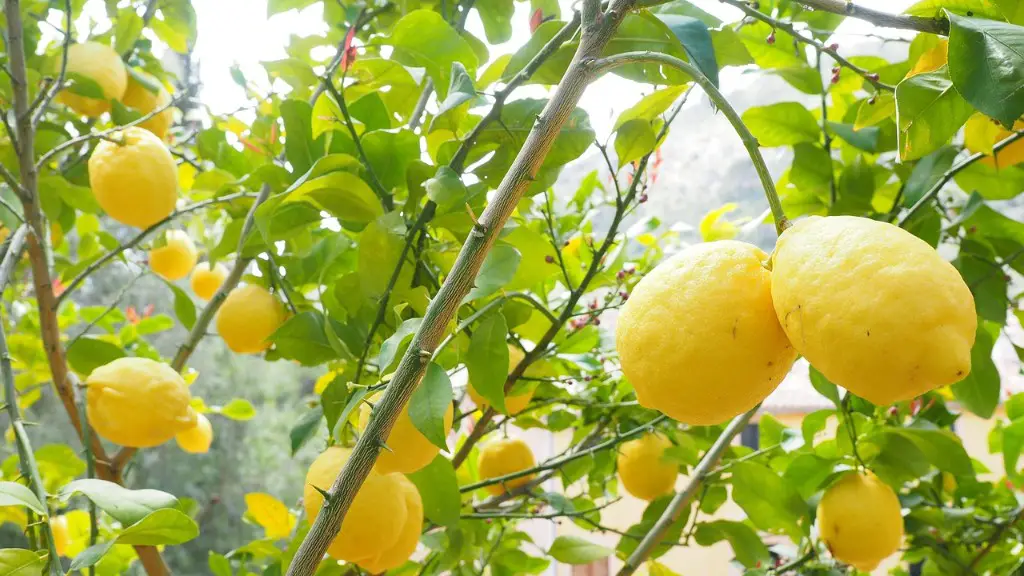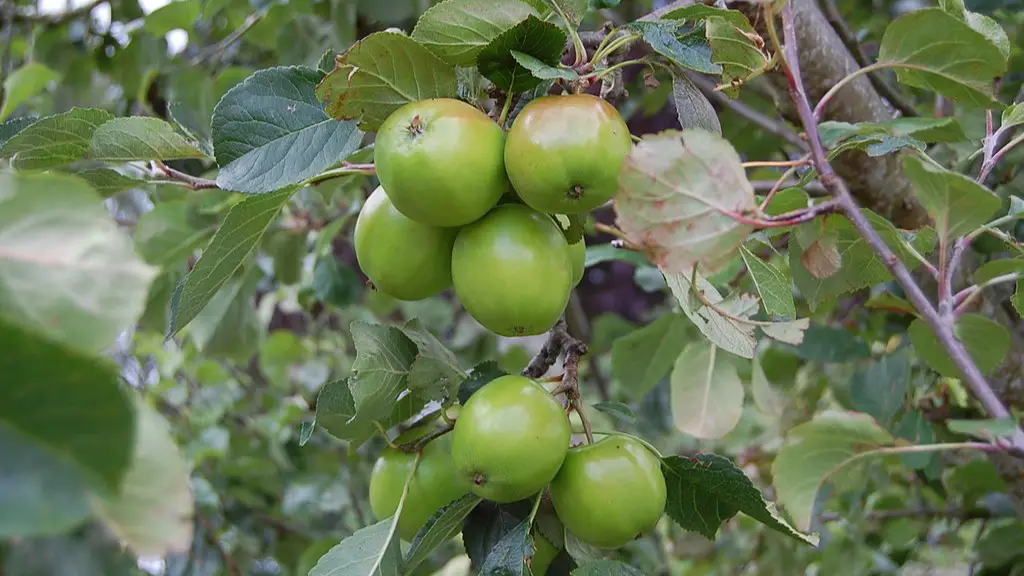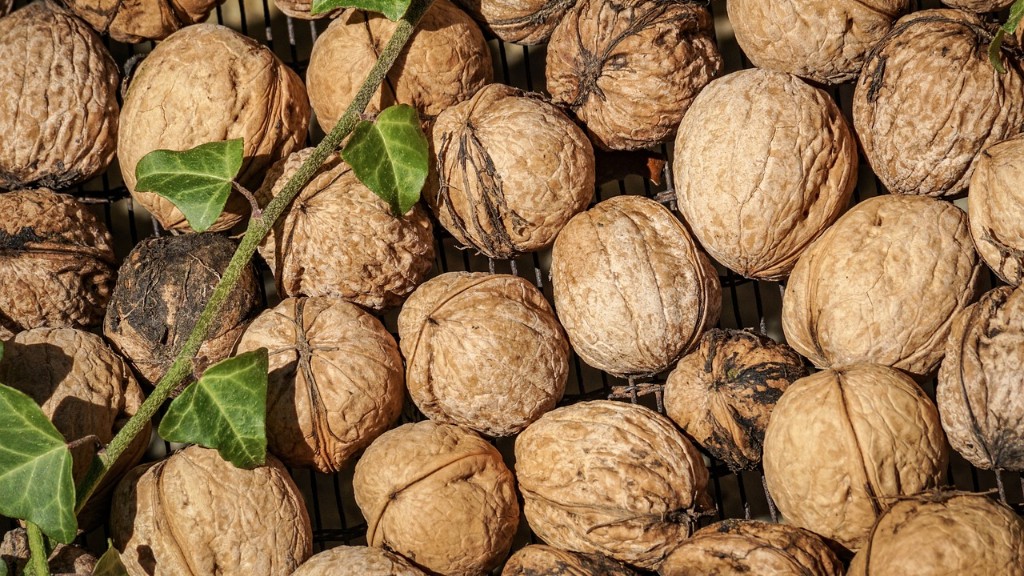For anyone who’s been trying to figure out when is the best time to repot a lemon tree, here’s the definitive answer: the best time to repote lemon trees is in late winter or early spring. Repotting at this time of the year helps give the tree the jumpstart it needs after its winter dormancy.
When it comes to repotting, timing is everything. It’s important to be aware of the age and condition of your lemon tree. If you have a young, fast-growing tree, you may want to repot it every year. On the other hand, mature trees don’t necessarily need to be repotted every year. As long as the roots aren’t too cramped, you may get away with repotting it only every two to three years.
When repotting your lemon tree, be sure to use a pot that’s 2-3” bigger all around than the tree’s current pot. You’ll also want to use a well-draining potting mix designed for citrus trees. Make sure to keep the soil line the same, or else your tree may suffer shock.
There are several signs that indicate a lemon tree needs to be repotted. The most obvious sign is if water begins to pool around the tree when you water it. Also, keep an eye out for roots pushing the soil mix to the edge of the pot. If that happens, it’s definitely time for a repot!
When actually repotting your lemon tree, the process is fairly straightforward. The most important thing is to be careful and handle the tree gently. Gently remove the tree from its old container and inspect the roots for any signs of disease. Carefully take off any dead or damaged roots and discard them, but be sure to preserve the vital healthy roots.
From there, simply place the tree in its new pot, and fill in the sides with your potting mix. Once your tree is nestled in the new pot, water it well and be sure to place it somewhere warm and sunny.
By repotting your lemon tree in late winter or early spring, you’ll be giving it the jumpstart it needs after its winter dormancy. Just be sure to use a pot that’s 2-3” bigger all around than the tree’s current pot, with a well-draining potting mix. Keep an eye out for any signs that your lemon tree needs repotting, and you’ll be giving your tree the best care for the longest life.
Why Is Repotting a Lemon Tree Necessary?
Repotting a lemon tree is necessary to ensure that it has enough room for its roots to spread out and access the water, oxygen and necessary nutrients from the soil. Without enough room in the pot, the tree can become root bound and will be unable to absorb the water and nutrients it needs. Repotting will give it space to continue growing and thriving.
It’s also important to repot your tree to help reduce the risk of diseases or pests. If a tree is in the same pot for too long, it can become more vulnerable to pests and diseases, which can significantly harm its health. Repotting your lemon tree with fresh soil and a new container can help keep it healthy and robust.
Another advantage of repotting your lemon tree is that it can help the tree bear more fruit. When a tree has enough space to grow its roots, it’s able to access more of the nutrients and water it needs. This leads to bigger, better-quality fruit. So if your lemon tree is still not bearing fruit or not producing as much as you’d like, it may be time to repot!
Preparing Your Lemon Tree for Repotting
Before you repot your lemon tree, there are a few things you should do to help give it the best start. If the soil mix has been packed down too tightly, fluff it up with your hands to help loosen it up. Then you can use a garden trowel to help make the soil more penetrable. This will help the roots spread out more effectively.
You can also add some slow-release fertilizer to the soil mix before repotting the tree. This will help give the tree the biggest boost possible, as it will have access to additional nutrients during its growth. However, be sure to only use a slow-release fertilizer, and not an instant fertilizer, as an instant fertilizer could be too powerful for the tree, resulting in burn or shock.
Lastly, you’ll want to give your tree a good soak before repotting it as well. If you’ve been watering your tree regularly, it should already have a good amount of moisture in it, but a good soak before repotting can help make the process easier. Once the soil is damp, it will be easier to handle.
Best Practices for Repotting a Lemon Tree
When it comes to repotting your lemon tree, there are a few best practices that you should follow. The most important one is to be gentle and handle your tree as little as possible. Any excessive movement or disruption to the tree can cause shock or stress, which can be very damaging.
It’s also important to not fill the new pot too full. Make sure to leave some space between the top of the soil and the rim of the pot. This will help make sure the roots have enough room to spread out and that water can drain out easily.
Lastly, be sure to water the tree immediately after repotting it. This will help keep the roots from drying out and will help the tree settle into its new pot. Make sure to water it thoroughly, but don’t over-water it.
How to Know if Your Lemon Tree Needs Repotting
The easiest way to know if your lemon tree needs repotting is to take a look at its roots. If you can see the roots poking out of holes in the sides of the pot, then it’s definitely time to repot. Also, keep an eye out for any signs of pests or diseases, as this can be an indication that it’s time to give the tree some fresh soil and a new pot.
Lastly, if your tree is showing signs of drooping or yellowing leaves, or if it’s not producing as much fruit as it used to, then it may need some additional room to grow. If that’s the case, then repotting is in order.
Conclusion
Repotting a lemon tree is an essential part of taking care of it properly. By repotting it in late winter or early spring, you can give your tree the jumpstart it needs to keep thriving for years to come. Just be sure to use a pot that’s 2-3” bigger than the tree’s current pot and to use a well-draining potting mix. If your tree is showing signs of drooping or yellowing leaves, pests, or diseases, chances are it’s time for a repot.




